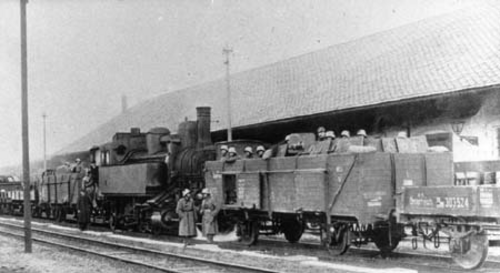
1923-1938
How it all began
Electrification, Austrofacism and travel boom: ups and downs.



Civil war, lost jobs and imprisonment of ÖBB employees.
On 1 March 1933, the railway workers took to the streets, as their financial situation remained precarious despite the upswing in tourism. They would no longer accept their salaries being paid in instalments and staged a warning strike. It was more of a symbolic strike than a true one, lasting only two hours from 9 to 11 am. Nevertheless, the Christian Socialists under Chancellor Engelbert Dollfuss imposed disproportionately severe penalties on the strikers. This in turn infuriated the Social Democrats. A session of the National Council (lower house of parliament) was held three days later, and the parties quarrelled to such an extent that all parliamentary presidents announced their resignation. The government interpreted this escalation as the "self-elimination" of the Austrian parliament and introduced the authoritarian "Ständestaat" or Federal State of Austria, which was a dictatorial, one-party state, also known as Austrofascism.
Naturally, these developments did not bode well for the more left-leaning railway workers. To keep them compliant, they were obliged to become members of the "Fatherland Front" party, which insisted upon members' willingness to kill and die for their country. This meant that they had to take part in the Austrian Civil War in February 1934. From armoured railway trains, they shelled the homes of so-called "insurgents" in the workers' districts of Simmering and Floridsdorf. Many insurgents and railway workers lost their lives.





The authoritarian government suspended the Socialist Party and all its sub-organisations. The situation was also grim for ÖBB employees: those who took part in the uprising were immediately dismissed, imprisoned and lost their pension rights, along with the right to live in railway-owned housing. The affected employees were literally left with nothing.
Cover photo: Armoured trains at Floridsdorf station, February 1934 © DÖW Foto 5877/3
Unless otherwise indicated, the image rights are held by © ÖBB Infra.